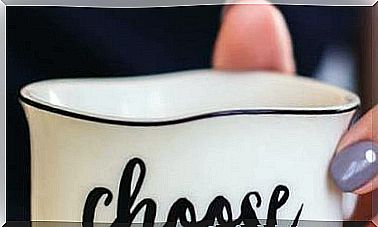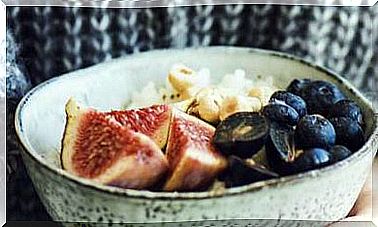Does Music In Stores Influence Our Purchase Decision?
During the pre-Christmas dates we receive an infinity of stimuli that invite us to consume. To what extent does music in establishments influence our purchase decision?

When we go to buy something, what influences whether we finally do it, or not? Recent studies maintain that in just 2.5 seconds we make the final decision. The funny thing is that it has been found that 95% of this time (2.4 seconds) corresponds to an unconscious process. Therefore, it is estimated that between 85% to 95% of purchase decisions are unconscious, that is, it is the emotions that essentially drive “rationalization.”
Thus, aspects such as the friendliness of those who serve us, the lighting of the establishment, the aroma of the environment that we like or the background music that enlivens the establishment and matches our tastes, can influence our purchase decision. The neuromarketing , acquired tools of neuroscience, analyzes, evaluates and notes.
Sensory marketing, based on the responses we offer to all the above stimuli, devises a series of strategies to try to influence the potential consumer by facilitating the memory of a brand or a product, or a quick purchase decision. How do they manage to do it through music?
Emotion leads to action
Until recently, we were convinced that all our decisions, especially important ones, were made in fully conscious states and that is why we valued their pros and cons over and over again, to avoid making mistakes as much as possible. But a few years ago, neuroscientists Antonio Damasio and Joseph LeDoux indicated that decision-making was not a rational process and that emotional components predominated.
In fact, there are more connections from the cerebral limbic system (responsible for managing emotions) to the cerebral cortex (seat of reasoning) than vice versa, which can support the claim that reason leads to conclusions and emotion to action.
We live in an environment full of stimuli that affect our senses and our brain consciously processes only part of them. These stimuli can cause changes in our physiological constants and affect our emotional state, in turn affecting our behavioral actions.
Since music affects emotions very directly, it is a perfect stimulus to influence purchasing decisions. Its effects will depend on each one of us, since many factors or variables influence and there is no specific algorithm. Whoever finds it, has found the Holy Grail. In fact, it is a probabilistic process. If this were not the case, we would behave like absolute automatons, although we sometimes recognize that we act this way. According to neuroscience, the response we offer to music is modulated by a series of variables:
- The internal variables (personal and individual) are those related to our experience and experiences, memories, personal tastes, expectations about what we hear, mood … Everything that differentiates and identifies us individually.
- The external variables (musical parameters, environment) are mainly the musical parameters (rhythm, melody, harmony, tonality, timbre, dynamics…) and the characteristics of the environment in which I find myself at that moment.
This is how we set the purchase rhythm
Neuromarketing studies indicate how musical genre, tempo and volume of musical reproduction can affect us, among others:
- The musical genre. It is usually associated with the image of the brand and, therefore, is related to the target audience. A musical setting with hits from the 70s will attract people over the age of 60, as it will coincide with their teenage years and will evoke memories of their longed-for youth, most of them pleasant. If, on the contrary, we use current music, for example by the singer Rosalía, it is evident that it is aimed at young audiences.
- A fast tempo. Tempo affects physiological activation and modulates the speed or slowness of our movements and decisions. Quick tempos are recommended at those times of the day when the influx of people is greater, to streamline the purchase process and thus avoid crowds.
In a fast food restaurant, fast music produces a physiological excitement that, without being conscious, induces fast eating so that more customers can access and, therefore, increase income.
- A slow tempo. Slow tempos are often useful when there are few customers in the store, which “invites” them to stay longer (in the hope that they will consume more). In a high-class restaurant, where the prices are high and according to the public that visits it, they will hardly be enlivened with a strident, fast musical genre. Here it is important for customers to stay longer and this is facilitated with a suitable musical genre (popular classical or chill out ) that provides calm and tranquility. Thus, after coffee, it is sure to continue with the odd drink, which will have a positive impact on the restaurant cashier.
- A high volume of playback attracts an essentially young audience and rejects the elderly, who find music at high volumes annoying. On the other hand, exposure to high-volume music decreases the concentration and attention that we can pay, for example to prices, and encourages quick decisions.
Music in commercial establishments
Large retail chains try to control the maximum details of the environment, adapting it so that it can generate moods that positively impact the consumer experience, and the musical setting is one of them. Its main objectives are obvious:
- Stimulate potential consumers.
- Generate positive emotions.
- Differentiate the establishment from the competition.
- Provide a pleasant environment by appealing to sensory memory, in which music, according to the target or target audience, is a decisive stimulus.
We can spend hours in a mall if we like music, or minutes when we find it unpleasant. The maxim is that if the potential consumer is comfortable and at ease with all the stimuli they receive from the environment (cordial treatment, light intensity, furniture, olfactory stimuli, music, decoration …) it will be easier to get them to stay longer in the establishment and the probability of purchase, theoretically, will be higher.
Let’s put ourselves in context: Do you like that there is background music in the commercial establishments that we usually visit? Possibly the answer has many nuances: yes, no, it depends. It would be necessary to assess many questions: what is my state of mind? Am I happy or depressed? What musical genre do I like the most? Do I have enough time to do the shopping quietly or do I barely have a few minutes? A complicated choice or do I go with a clear idea of what I want? Do I go alone or with someone?
And, on the other hand, is it a small or large establishment? Is the sound system of quality? Are there other acoustic sources that can mask the music that is being played? Is the volume high? What musical genres are used? reproduce? Are they repetitive? Looking ahead to the Christmas season, do we prefer to buy in an establishment that is entertained with Christmas carols? Do they remind me of happy moments from my childhood? …
If when you return from your Christmas shopping, and calmly at home, you take the trouble to observe what you have bought and analyze the above factors, you may be surprised by some other surprise.









